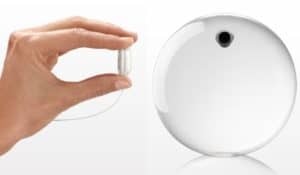For those struggling with moderate obesity, but who aren’t quite large enough to qualify for weight loss surgery, there may be another, less invasive solution.
The Obalon balloon system is a new treatment that is slated to hit the market in January. It involves swallowing gas-filled balloon capsules in order to help curb overeating.

According to a recent study presented at ObesityWeek 2016, people who swallowed the gas-filled balloon capsules lost 1.9 times more weight than those who just relied on diet, exercise, and lifestyle therapy. The study also found that the participants were able to maintain their weight loss.
“The significant weight loss achieved with the Obalon 6-Month Balloon System is maintained at 12 months,” said Aurora Pryor, MD, study co-author and Chief Bariatric, Foregut and Advanced GI Surgery, Stony Brook University. “This combination of lifestyle modification and balloon therapy provides a new low risk option for patients struggling with obesity.”
The FDA-approved Obalon Six-Month Balloon System contains three tiny capsule. Each capsule is swallowed three weeks apart. The capsule contains an inflatable balloon attached to a catheter, which expands inside the stomach. X-rays are used to make sure that the capsules land in the right spot. Then, gas is pumped through the catheter to fill the balloon up. Once this process is done, the catheter is removed and the patient goes home.
The balloons, which stay inside the person for six months, fill up the stomach and make the person feel full quicker. Later, the balloons are removed through a minimally-invasive endoscopic surgery.
A registered dietitian also met with the study’s patients every three weeks and helped them make healthy lifestyle changes.
“There is no magic pill for obesity, but this swallowable balloon and other intragastric balloons may offer new hope to people who otherwise would not seek treatment or not have as good a result with diet and exercise alone,” said Raul J. Rosenthal, MD, ASMBS President and Chairman, Department of General Surgery, Cleveland Clinic Florida, who was not involved in the study.
People who opt to have the procedure once it’s available in January will also be required to meet with a dietician. The researchers stressed that the Obalon balloon is just one step in the holistic approach to sustainable weight loss.
A vast majority of the study’s volunteers experienced some nausea and cramping from the balloon, but the side effects were either mild to moderate.
“A few patients said that after the third balloon was inserted that they could feel it; that it made them feel pregnant,” Dr. Pryor said. “But most of them couldn’t tell they were there, and they actually wanted to keep them in longer than six months.”
This is not the first weight loss balloon. Currently there are two other balloons (ReShape and Orbera) available, but they require an endoscopy to both remove and insert them. In comparison, the Obalon balloon is noninvasive.
“You can easily have a balloon put in and go to work the same day with Obalon, which you wouldn’t be able to do with the other two,” said Dr. Pryor.
When the device hits the market January, it will most likely not be covered by insurance, Dr. Pryor explained. The estimated cost for the procedure is not yet available.
Danielle Tarasiuk is a multimedia journalist based in Los Angeles. Her work has been published on AllDay.com, Yahoo! Sports, KCET, and NPR-affiliate stations KPCC and KCRW. She’s a proud Sarah Lawrence College and USC Annenberg alumn.


![How To: ‘Fix’ Crepey Skin [Watch]](https://cdn.vitalupdates.com/wp-content/uploads/2017/05/bhmdad.png)












